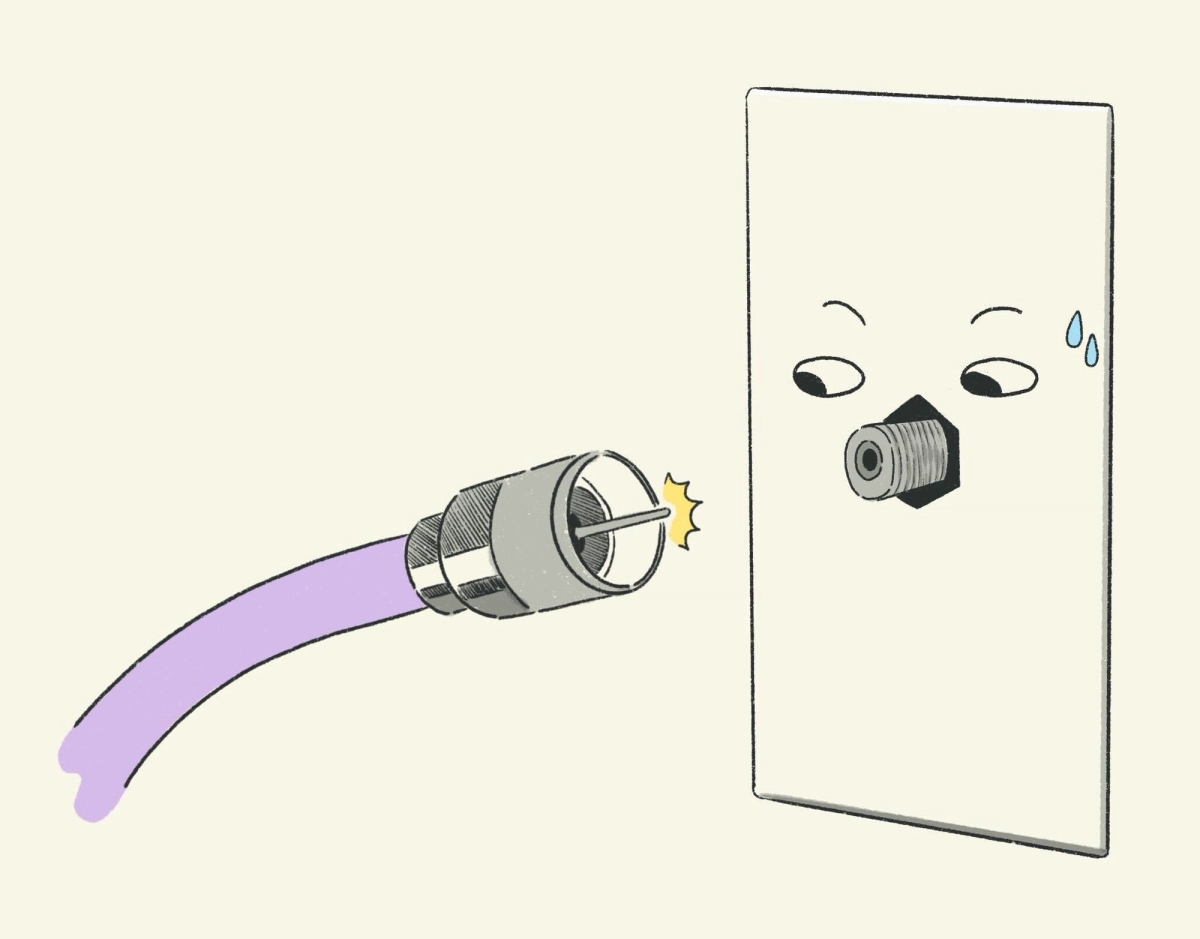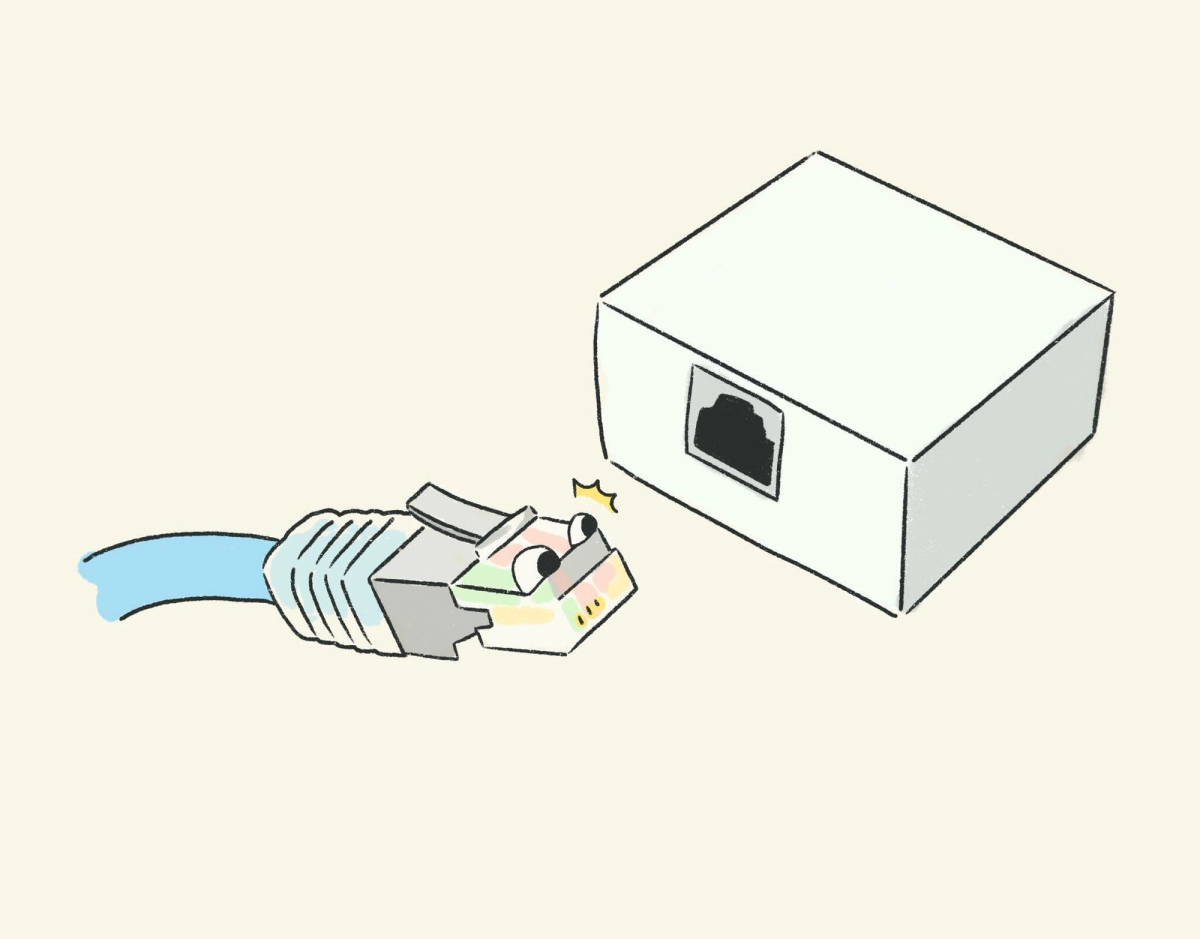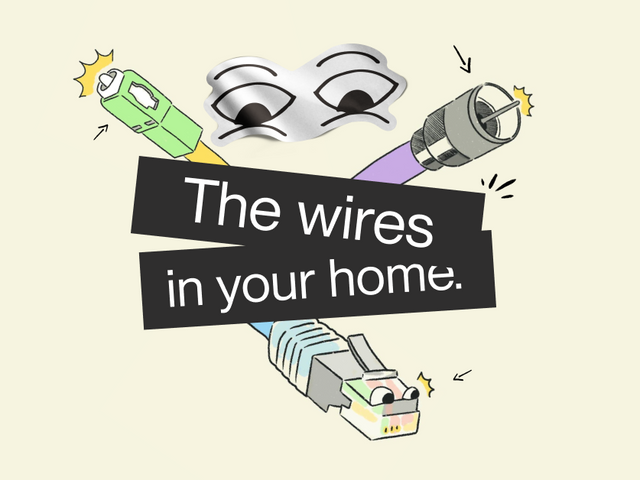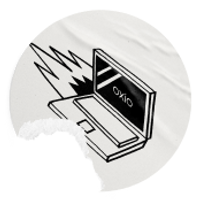TL;DR
- Most homes in Canada will have one or all of the following lines: Coaxial, Fibre, and DSL.
- Each of these lines use a different technology and can help determine which service and ISP is best suited for your needs.
- Does it really matter which line your internet provider uses? It can.
- The future of how the internet is supplied to your home may not involve these ever expanding lines at all.
“A series of tubes”
You may have heard this response a number of times in pop culture references when asked to describe - What exactly is the internet?
Today, we’re here to tell you that it’s exactly that. Well, sort of…
You ever notice in your home that there are a bunch of different outlets or lines sticking out of your walls, but haven’t a clue what they’re for? No, they’re not fork cleaners–please don’t stick any metal in them.
They’re most likely the lines to your home that supply your internet service. ISP’s, like yours truly oxio, use these connections to bring our sweet sweet service to your residence, and allow you to share all the Vine’s er… Tik Tok’s you want with loved ones!
But you may have also noticed these lines or outlets don’t exactly look the same. That’s because most modern homes will have 2 or 3 different lines installed to/in them. Why? Well the big telcos that own + maintain these lines don’t exactly play nice with each other, and aren’t always big fans of sharing. But having multiple options available does have its advantages.
Most modern home’s in Canada will have the following types of lines + outlets:
- Coaxial cable
- Fibre
- DSL
Are there major differences between them? Let’s take a closer look!
Coaxial cable
This one hits close to home as coaxial cable, at the time this article is being written, is exclusively what oxio internet is supplied on. These are the cables and outlets with a pointy end that you screw on.. (insert dirty joke here). For better reference, take a look at the illustration below.

Coaxial is comprised of copper (core and shielding) and transmits data through electricity.1 A coaxial cable, like in the image above, is used to connect to a cable or Docsis modem, which is what supplies internet service to your home. Typically a router, such as the eero 6, will then connect to the modem via an ethernet cable to create a Wi-Fi network in your home, connecting all of your devices. Some providers also supply a modem/router combo in one device, but these can be a bit more troublesome when it comes to troubleshooting.
So you might be wondering, “Is coaxial cable good for internet service?”
In terms of modern day internet usage, yes. Coax is:
✓Affordable
✓Easy to find/Widely accessible
✓Has inexpensive and simple installation
✓Provides stable service with durable lines
One thing you may notice with internet plans over a coaxial connection is that they have asymmetric speeds, meaning you’ll typically see way higher download speeds compared to upload speeds.2 Does this lower upload speed really make a difference? Well, no. Unless you have a household with multiple users live streaming daily or have a job in the field of graphic design (where you may need to quickly upload many files at a time), a very high upload speed is not something most modern households need.
Most modern neighbourhoods are also set up with HFC (hybrid fibre-coaxial). Which means it’s a fibre connection to the node, and then coaxial line the rest of the way into nearby homes. The owner/provider of this line infrastructure differs across Canada.
Ontario > Rogers, Cogeco
BC, Alberta, Saskatchewan, Manitoba > Shaw
Quebec > Videotron, Cogeco
Nova Scotia, P.E.I, Newfoundland > Eastlink
Fibre
This one is all the rage right now. But does it live up to the hype?

These lines are comprised of fibre (small flexible strands of glass) that transmit data through light.3 Unlike coaxial cable lines, fibre lines are able to provide symmetrical speeds, meaning upload speeds are just as fast as download speeds.
These lines really are built for the future, offering higher speed options and dedicated connections to each home that mitigate the risk of slow downs. Does that mean your devices will perform faster? Not necessarily, especially if over Wi-Fi as it will depend on your router and Wi-Fi signal strength in the home (more on this to come).
Unlike coax cable infrastructures, fibre lines are not as widely available–yet. Which is one reason why they can actually increase the value of a property by up to 3% in value.4 Fibre lines are also considered top tier when it comes to reliability, and are not susceptible to outages or cuts during severe weather conditions. If a provider claims they offer fibre service, it’s good to ask and differentiate if it’s FTTN (Fibre to the node as mentioned in previous section) or FTTH (Fibre to the home) as the second option is true fibre service.
Currently, many provider’s like ourselves are unable/not permitted to provide service over fibre-optic lines. We hope to be available on this infrastructure one day in order to provide even more access to our fair and sustainable pricing model to as many Canadians as possible.
In Canada you’ll find the fibre lines are owned/operated by the big telcos Bell, Rogers, and Telus.
DSL
This one is a bit older. DSL, or Digital Subscriber Line, utilizes copper telephone lines to supply internet service. This line is widely available as most homes had landlines wired to them for home phone service.5 Remember landline home phone service? Some advantages of this phone include:
✓No recharging battery with wall socket function
✓Can be used as a weapon with its strong plastic moulding and won’t break
✓Zero access to iCloud so your mirror selfies are safe
…okay maybe we should save these for another article. Back to DSL!
Internet service over DSL lines is, to be quite frank…outdated. Speeds are typically limited around 100mbps and, like coax cable lines, are asymmetrical. These aren’t the best option when it comes to modern day residential internet usage such as HD streaming and video conferencing. Another thing to consider is that these lines are a “distance-sensitive technology”.6 The further away the line is from the ISP’s central office, the higher the chance of network degradation and strength reduction in connectivity.

However, because DSL is an older line in Canada, it is widely available and plans are usually very affordable and can be sufficient for a single user in a household.7 You’ll see almost all providers are moving away from offering service on the DSL line, and pushing customers to using service provided over the aforementioned coax cable or fiber lines instead.
Well...which one should you pick?
It’s totally up to you! But factoring in the lines available to your home can help choose an ISP best suited for your needs. Some things to consider:
- Which lines are available to your home
- Outlet location in home
- Budget for internet
You’ll want to make sure the outlet where the modem/router will connect to is in a centralized location in the home. Even if you’re using the most advanced Fiber optic line, it won’t matter much if your router is stuck in a location of the home where devices have a poor connection to the wifi. For example, in some homes, the Fiber line may be in the garage, while the coax cable line feeds into multiple floors. In this case, choosing a provider that uses the coax line may be best to ensure your devices have a strong Wi-Fi connection.
Next, you’ll also want to consider what you actually need for internet speeds. Instead of always opting for the highest speed plans available, carefully evaluate your uses of home internet, and you may find yourself opting for a plan much more affordable than you initially thought. Your wallet will thank you later!
Are there other options?

There are two other but widely less popular options that customers can choose from that don’t actually require a line to your home and may hint towards a future where lines aren’t needed at all.
The first is mobile hotspotting. Some mobile phone plans now offer “unlimited data'' over LTE or 5G networks. For someone who only uses a couple devices online in their home, they can set their phone to hotspot to essentially create a router-like experience and have their nearby devices use the phone’s data plan to get online, also known as “tethering”.8 No line to your home needed! However, something to consider here is the cost of these phone plans can get pretty steep, and it’s not nearly as reliable or fast as having home internet setup for your devices.
The other option is the quickly growing Starlink internet service.9 Starlink is developed by SpaceX and uses satellite based internet service, to deliver globally available internet services. There’s no line needed to your home, but a technician will need to install a Starlink satellite dish inside.. er…on top of your home, and set up one of their own router’s.
This is an incredible option for those remote or country homes where getting fast and reliable internet service has been near impossible. The downside? Starlink is vastly more expensive than other providers, with installation itself costing CA$759 (normally free with most line providers) and a monthly rate starting at CA$140. Because it’s satellite based, you also have to consider that the signal can be affected by weather, such as stormy or heavy rain conditions (think back to using Bell satellite TV… and it cutting out during the Brock Lesnar PPV right when he was going for a slam because there was a storm outside and now you’ve missed it).

Understanding the different lines to your home, can help make an informed decision in choosing an ISP best suited for your needs and most friendly towards your budget. While line infrastructures are constantly expanding and technology for providing high speed internet service is always evolving, having the latest and greatest may not actually be the best choice for you. Making an informed decision will lead to much happier and more reliable uses of the internet such as binge-a-thons and those uninterrupted conference calls that could have been an email!
A warm thank you to the Marketing team for their continued support in writing this article. To Yeona and Michael for taking the time to review. And to Yeona again for the always super cool illustrations!
- What’s different between fiber-optic and coaxial cables?
- Coax versus Fiber: Comparing Internet Access Options
- Fiber vs. cable: Understanding the differences
- CV News
- DSL vs. Cable: Which Is Right for You?
- How DSL Works
- DSL vs. Cable vs. Fiber: Which Internet Option Is the Best?
- What Is a Hotspot? - WiFi Hotspot Definitions and Details
- Starlink








